
Could I find a new gemstone?
Professional gemmologists are often asked similar questions, like what is the rarest stone they have encountered and is there anything ‘new’ left to discover. The answers, especially to the latter, are not easy to formulate, and there are factors that a gemmologist must unpack to provide a suitable response. Here, Gem-A Tutor Pat Daly considers how likely it is that we will discover a ‘new’ gem material and what that might look like in reality…
Finding a new gemstone is not easy for several reasons. When we say that gemstones are found, we usually mean that they have been noticed by people with access to well-established gem and jewellery markets. They may have been known locally for a long time. In some cases, the locations of gemstone mines were forgotten, and they had to be rediscovered. For example, jadeite from Guatemala was used in Central America for hundreds of years before sources were relocated in the 1950s to 1970s.
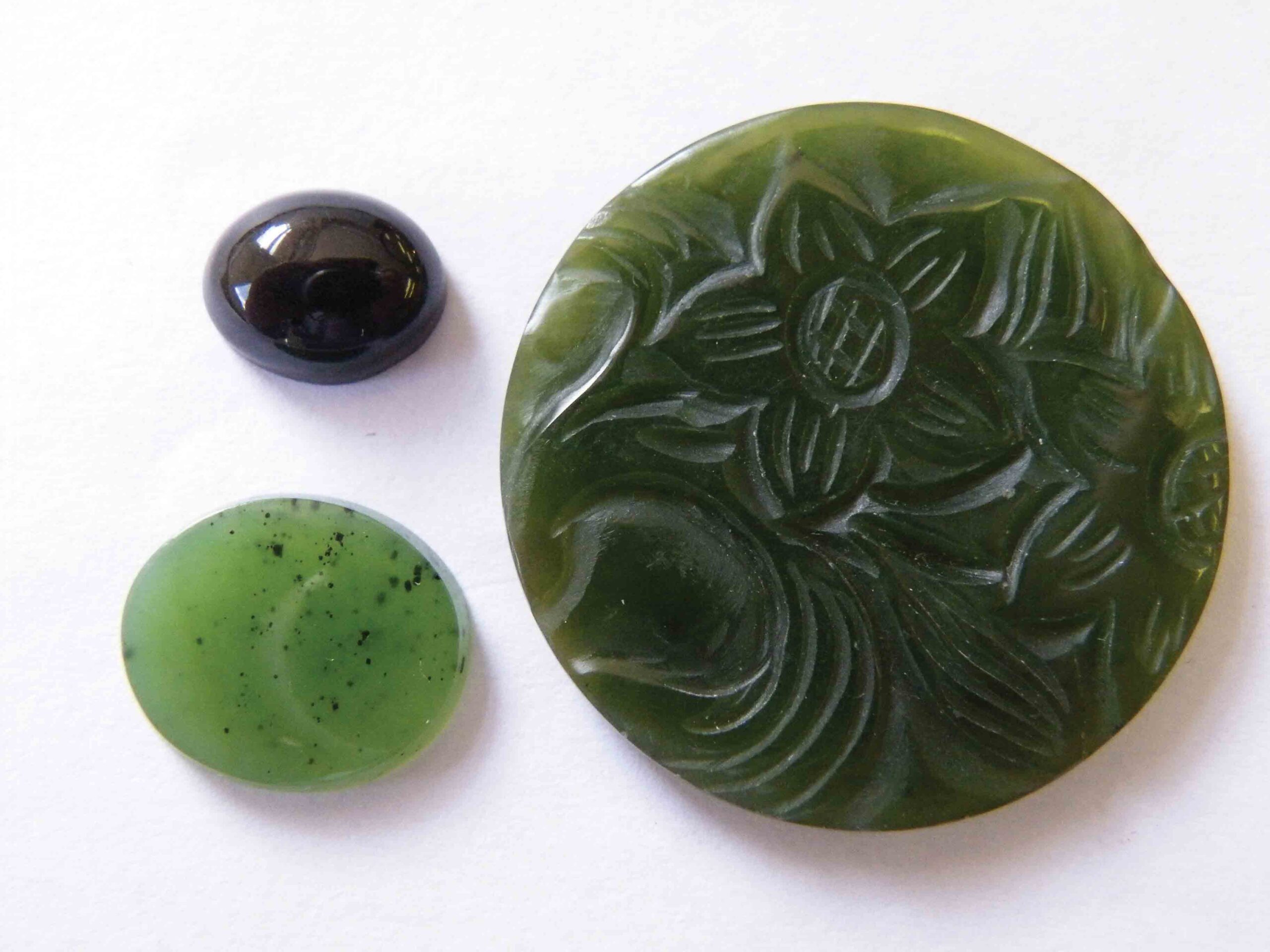
Nephrite jade photographed by Pat Daly.
Gem prospectors have often been helped by seeing what local people have found.
We cannot know what might be discovered in the coming decades, but consideration of the many gem species and varieties which have been discovered in the past can help us to decide the likelihood of finding them in the future.
The history of finding new gemstones
The history of gemstones and jewellery reaches back into prehistory. Biogenic materials such as ivory, bone and shell, and distinctive rocks, like obsidian and jades, were used before the establishment of recognisable civilisations. Many other materials have been used for 2,000 years and more, such as quartz gems, lapis lazuli, turquoise, emerald and corundum, and their original discoveries are hidden from us.
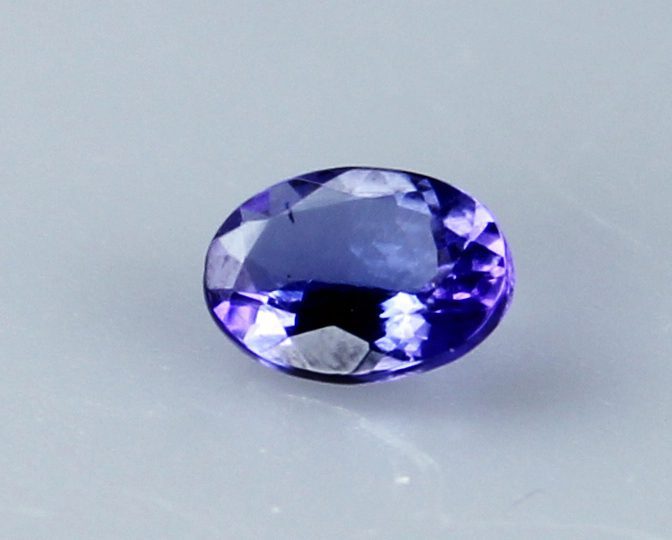
Tanzanite gemstone photographed by Henry Mesa.
Formal descriptions of gemstones during the 19th century, as the sciences developed, provide reliable dates, although they may not give those of first discovery. They gave details of chemistry, physical properties and crystallography, so that gem species could be properly defined, and gem varieties could be related to their correct mineral groups. Notable stones which made their first appearance in this century included the colour-change alexandrite variety of chrysoberyl in the 1830s and bright green demantoid garnets, both from Russia and the emerald-green hiddenite variety of spodumene from the USA.
The story of South African mines
As well as the advent of previously unknown gem varieties, new sources of well-known gemstones were found. The greatest of these was the diamond deposits in South Africa. Before about 1870 all diamonds had come from India, Brazil and Borneo. The new mines provided quantities which could satisfy demand in industrialised countries, in which increasing numbers of people could afford to take an interest in gemstones.

Benitoite in matrix photographed by Henry Mesa.
Additional sources of diamonds were found during the following century, starting with Namibia in 1906, followed by mines in other African countries, Russia and Australia. The production of gem diamonds a century after the first African discovery was about 100 times greater than before.
The story of Californian mines
Other stones found in the first decade of the 20th century included sapphire-blue benitoite, a stone from just a couple of mines in California. Despite its rarity, this stone has retained its desirability and is as celebrated now as when it was introduced to the gem market. Kunzite and morganite, the pink varieties of spodumene and beryl, respectively, were found before 1910.
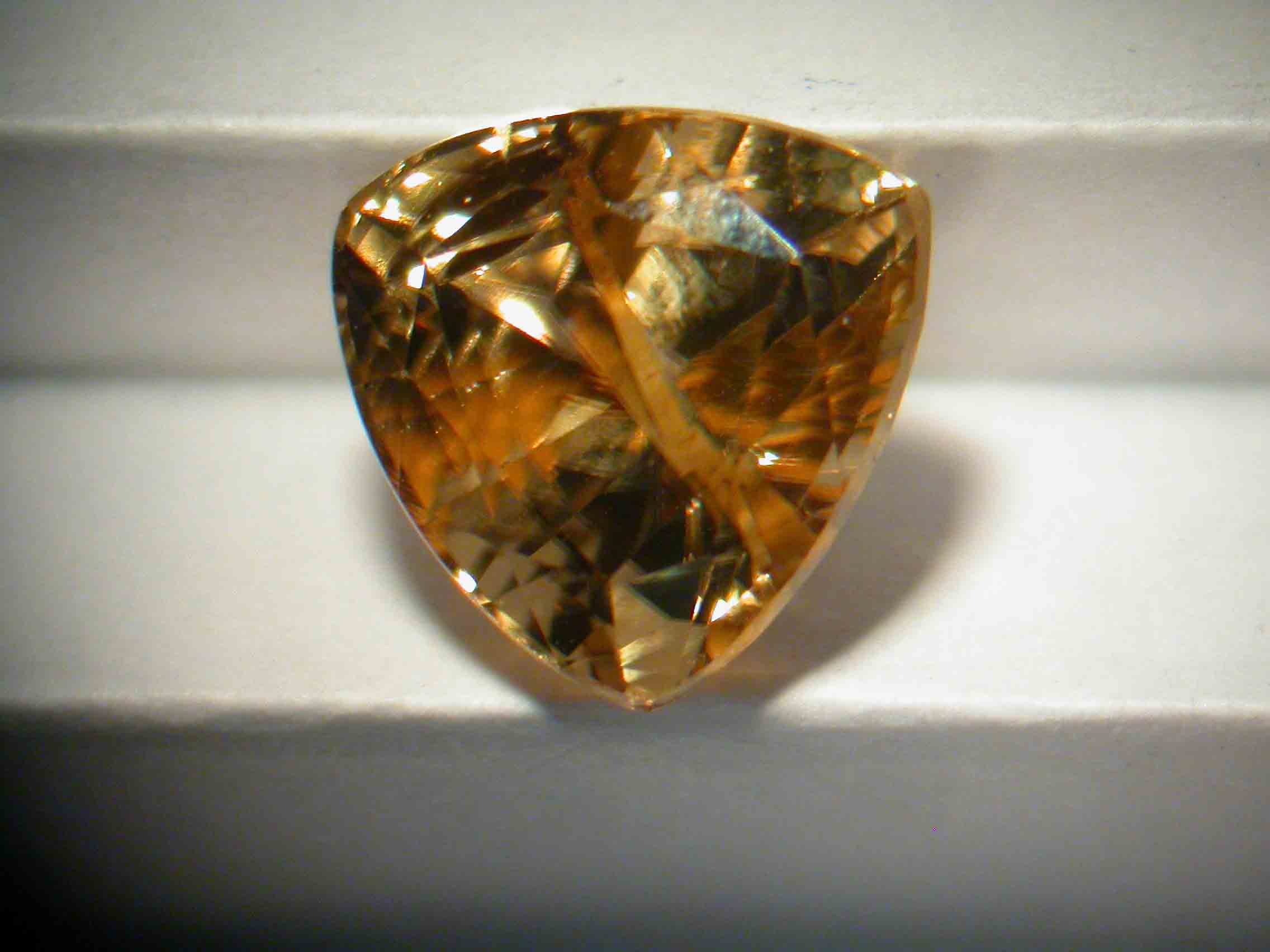
Sinhalite gemstone photographed by Pat Daly.
As the century progressed, more new stones were traded. Of those species and varieties which are well-known, at least to jewellers and gemmologists, 20 or more were discovered during the 20th century, besides many more which may be known only to keen collectors. They include commercially important varieties such as the lovely blue to purplish tanzanite and bright green tsavorite garnet, both found in the 1960s. Vividly coloured Paraiba tourmalines from Brazil astonished the trade in the 1980s, and they were joined by similar stones from Nigeria and Mozambique in the Early years of this century.
Other interesting stones are also worthy of attention, such as transparent red beryls, fine sapphire-blue kyanites, bright green, chrome-coloured tourmalines and diopsides and colour-change diaspore, a mineral which was previously unknown in gem quality. Opaque stones included charoite, a Russian material with an unmistakable purple, silky appearance, and sky blue larimar from Dominica.
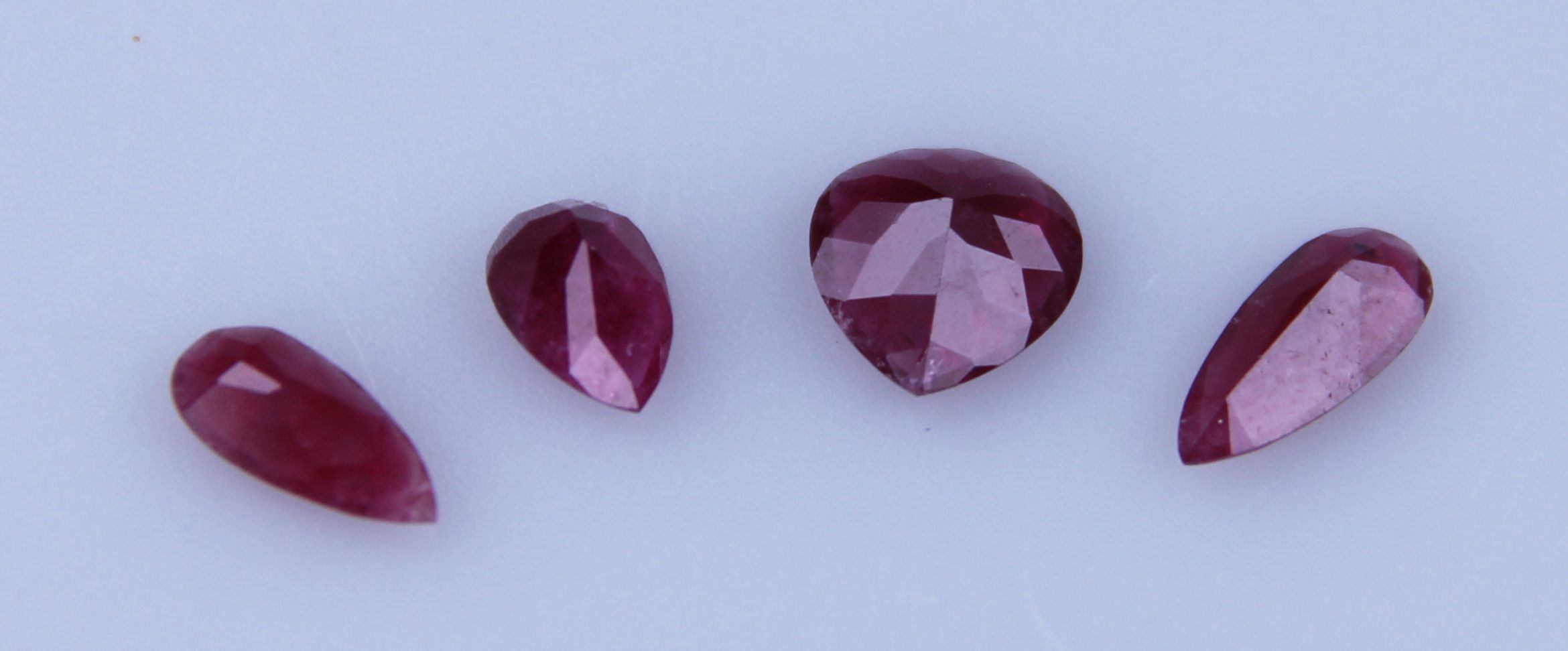
A group of red beryl pear-shaped gemstones from the Gem-A Archives.
There were new garnet varieties, apart from tsavorite. Some stones rival the red-to-green colour change of alexandrite, and iridescent garnets were found in Nevada, Mexico and Japan.
A few of the new stones changed colour when irradiated with ultraviolet. Some hackmanite, a variety of sodalite, changes from pink to amethystine purple when held in sunlight and fades when kept away from it. The colour of tugtupite, a pink stone from Greenland, also intensifies in sunlight and slowly fades when out of it.
Amongst other particularly interesting stones are ekanite, one of the few radioactive materials cut as a gemstone, taaffeite, the only mineral first discovered as a faceted stone and which was bought from a Dublin jeweller in 1945, brazilianite, a pleasing greenish-yellow gemstone named after its country of origin, and sinhalite, whose similar properties led to its confusion with peridot before it was recognised as a new mineral.
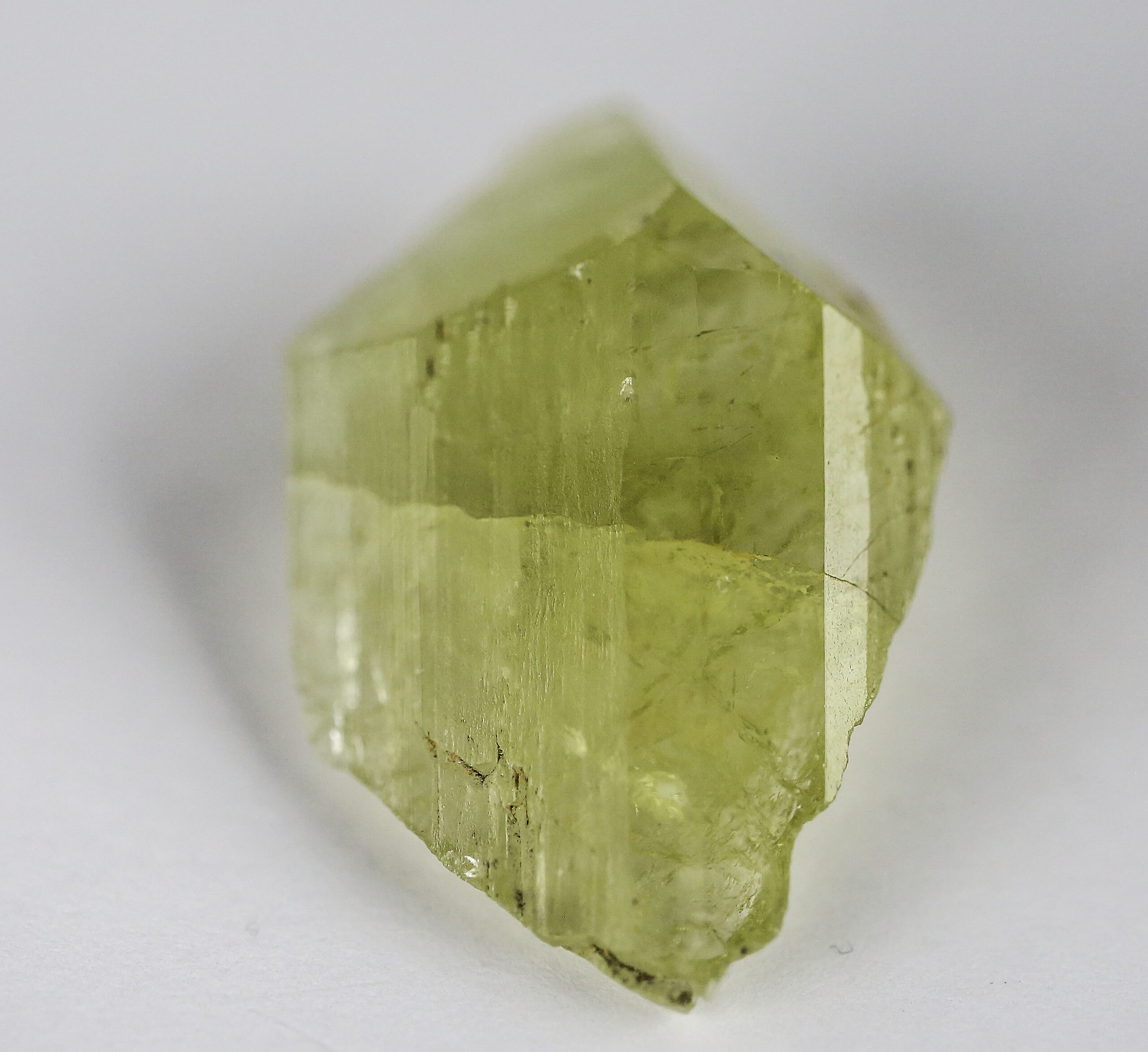
Rough brazilianite photographed by Henry Mesa.
Finding new gemstones in the 21st century
We have now entered a new century and may look forward to the introduction of new gem materials. Some have already appeared. A commercially important source of diamonds in Canada is now mined, a new gem mineral, pezzottaite, from Madagascar, and two rare stones which had been described in the last century but were not seen as faceted stones before the millennium. Painite, a pink to reddish brown stone, was one of the rarest minerals known in the mid to late 20th century but cut stones became available from two localities in Myanmar. Grandidierite was described in 1902, but the pleasing transparent green gem-quality stones were not available before 2003.
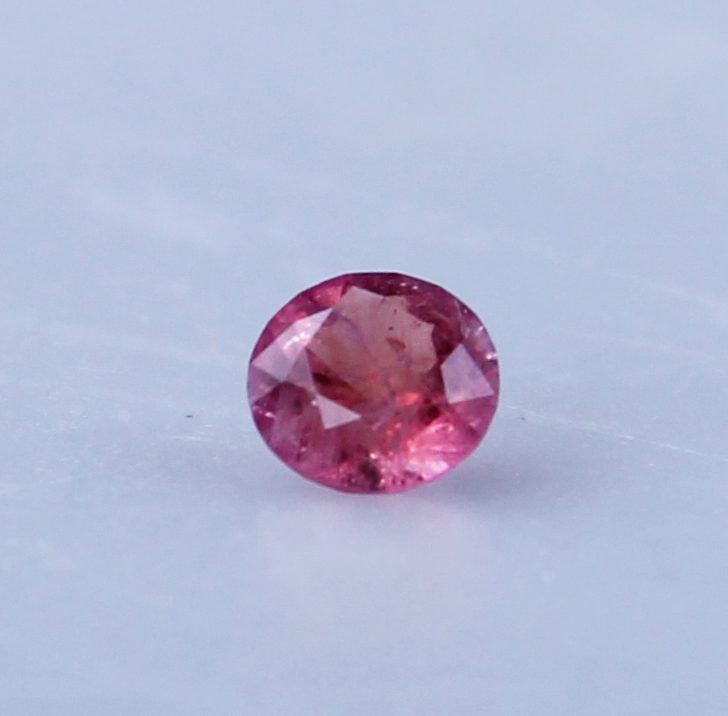
Pezzottaite gemstone photographed by Henry Mesa.
Conclusion
It is not possible to predict the future. At some time, all accessible gem deposits may be found, worked and exhausted, but it is most unlikely that we have reached that situation. New gemstones have been discovered recently in countries, such as Myanmar and Sri Lanka, which have been worked for thousands of years, and new areas, such as Antarctica and the arctic regions of the northern hemisphere, areas covered by bogs, forests and deserts remain to be explored. Based on what has happened in the past, we may look forward to future finds of gemstones; some will be familiar, but others may be wholly unexpected.
Main image: rough gemstones courtesy of Unsplash, royalty free.


